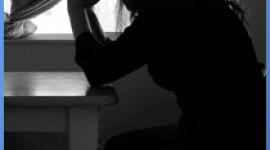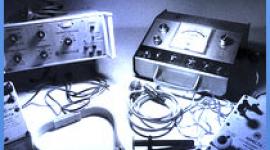Electroshock Debate Continues
Skeptics cling to old images, psychiatrists say
By Andrew Fegelman
CHICAGO TRIBUNE
 Unbeknownst to her, Lucille Austwick became the poster girl for patient-rights advocates and psychiatry's skeptics.
Unbeknownst to her, Lucille Austwick became the poster girl for patient-rights advocates and psychiatry's skeptics.
"The Rosa Parks of electroshock" is how one publication described the 82-year-old retired telephone operator, a patient in a North Side nursing home.
Across the country, psychiatrists closely monitored her court case in Chicago. It examined whether Austwick, without her consent, could be given electroshock therapy to try to lift her out of depression that had caused her to stop eating. Psychiatrists believed that a ruling preventing the treatment would represent a serious setback for electroshock.
Ultimately, Austwick never received the treatment after doctors concluded that her condition had improved. But her case, and an Illinois Appellate Court ruling earlier this month prohibiting the treatment even after Austwick no longer needed it, has crystallized one of the most controversial and unusual debates in psychiatry.
Critics call it shock treatment. Doctors prefer the more benign "electroconvulsive therapy," or ECT. It is the administration of electrical charges to the brain to treat mental disorders, usually severe depression.
It isn't the first line of psychiatric treatment, but neither is it infrequently used. Experts estimate that 50,000 to 70,000 electroshock treatments are administered annually in the United States.
Electroshock first was deployed to treat mental illnesses in 1938. And for decades, controversy has surrounded its use, misuse and associated problems, ranging from broken bones to death.
While psychiatrists say techniques have vastly improved over the decades, the image of electroshock remains unsettling for many Americans.
There is R.P. McMurphy, the character played by Jack Nicholson in the film version of "One Flew Over the Cuckoo's Nest," undergoing doses of electricity to render him docile.
And then there is a humbled U.S. Sen. Thomas Eagleton (D-Mo.), bumped out as George McGovern's vice presidential running mate in 1972 after shamefully confessing to receiving ECT in the way a politician would admit marital infidelity.
Those lingering images have aided a movement that has continually battled to discredit electroshock.
One of the movement's soldiers is David Oaks, a community activist who runs the 1,000-member Support Coalition in Eugene, Ore.
The group bills itself as a patient-rights organization, but the tone of its pleadings have been decidedly anti-electroshock.
"The claims seem to be that anyone who would criticize psychiatry must be under the powers of some evil cult, and that is ridiculous," Oaks said. "What we are is pro-choice, that people get a range of alternatives, and that no force be used."
Oaks said his organization was attracted to Austwick's case by the question of whether electroshock could be used on a woman who never had consented to it.
To the dismay of psychiatrists, the group was allowed to file a brief in the Austwick case describing problems with electroshock.
The guru of the anti-electroshock movement is Dr. Peter Breggin, a Maryland psychiatrist.
Breggin once likened the treatment to a "blow to the head," saying it delivered the same kind of brain damage.
But most psychiatrists dismiss electroshock opponents as kooks and zealots. There is no better evidence, they say, than the fact that among the leaders of the anti-electroshock movement is the anti-psychiatry Church of Scientology and its Citizens' Commission on Human Rights.
"A lot of these groups aren't just against ECT, they are against psychiatry in general," said Dr. Richard Weiner, an associate professor of psychiatry at Duke University and chairman of the American Psychiatric Association's task force on electroshock.
"ECT has been the subject of a lot of public hearings, and it has always come out OK," Weiner said.
Still, no one can dismiss the successes of electroshock's critics. Their pinnacle came in 1983, when they pushed through a ban on electroshock within the city limits of Berkeley, Calif. The ban was later overturned in court.
But the legacy has lingered. California continues to have one of the toughest electroshock laws in the country, requiring full disclosure to the patient of reasons for the treatment, its duration and all possible side effects. Illinois law requires court approval of the treatment when the patient isn't able to consent to it.
That's how Austwick's case ended up in court.
But it became more than a case about her, creating an arena for much broader questions about the treatment in general. And it may have resulted in a serious setback to use of electroshock.
It wasn't supposed to be this way. During a hearing before the Appellate Court in May, Judge Thomas Hoffman warned that the Austwick matter was not supposed to be a case about the pros and cons of electroshock.
Instead, he said, the issue was whether Austwick should have been given the treatment and what standards should be applied for answering that question, the judge said.
Although Austwick no longer needed the treatment, the Appellate Court decided that the precedent-setting case raised too many critical issues. It issued a ruling anyway saying shock therapy wouldn't be in Austwick's best interests.
The court noted the "substantial risks" associated with the treatment, including broken bones, memory loss and even death.
The ruling reflected the thinking of the opponents, and the Illinois Psychiatric Association criticized it for ignoring all the scientific evidence.
The use of anesthesia and muscle relaxants, psychiatrists said, have eliminated the incidence of broken bones.
As for memory loss, they conceded that it does occur but usually disappears.
Some patients, however, report some long-term memory loss that never dissipates.
Pyschiatrists also note that statistics show a death rate of only 1 for every 10,000 procedures performed.
Some doctors say the Austwick case illustrates the dangers of the courts trying to deal with science.
The Austwick ruling presented "not a very clear and fair description of a treatment that is really life-saving," said Dr. Philip Janicak, medical director of the Psychiatric Institute at the University of Illinois at Chicago.
"It is rooted more in impressions that go back 20 years than the facts about what modern techniques are involved."
next: Ex-Psychiatric Hospital Exec Admits Bribing Physicians
~ all Shocked! ECT articles
~ depression library articles
~ all articles on depression
APA Reference
Staff, H.
(1995, September 24). Electroshock Debate Continues, HealthyPlace. Retrieved
on 2025, November 29 from https://www.healthyplace.com/depression/articles/electroshock-debate-continues



